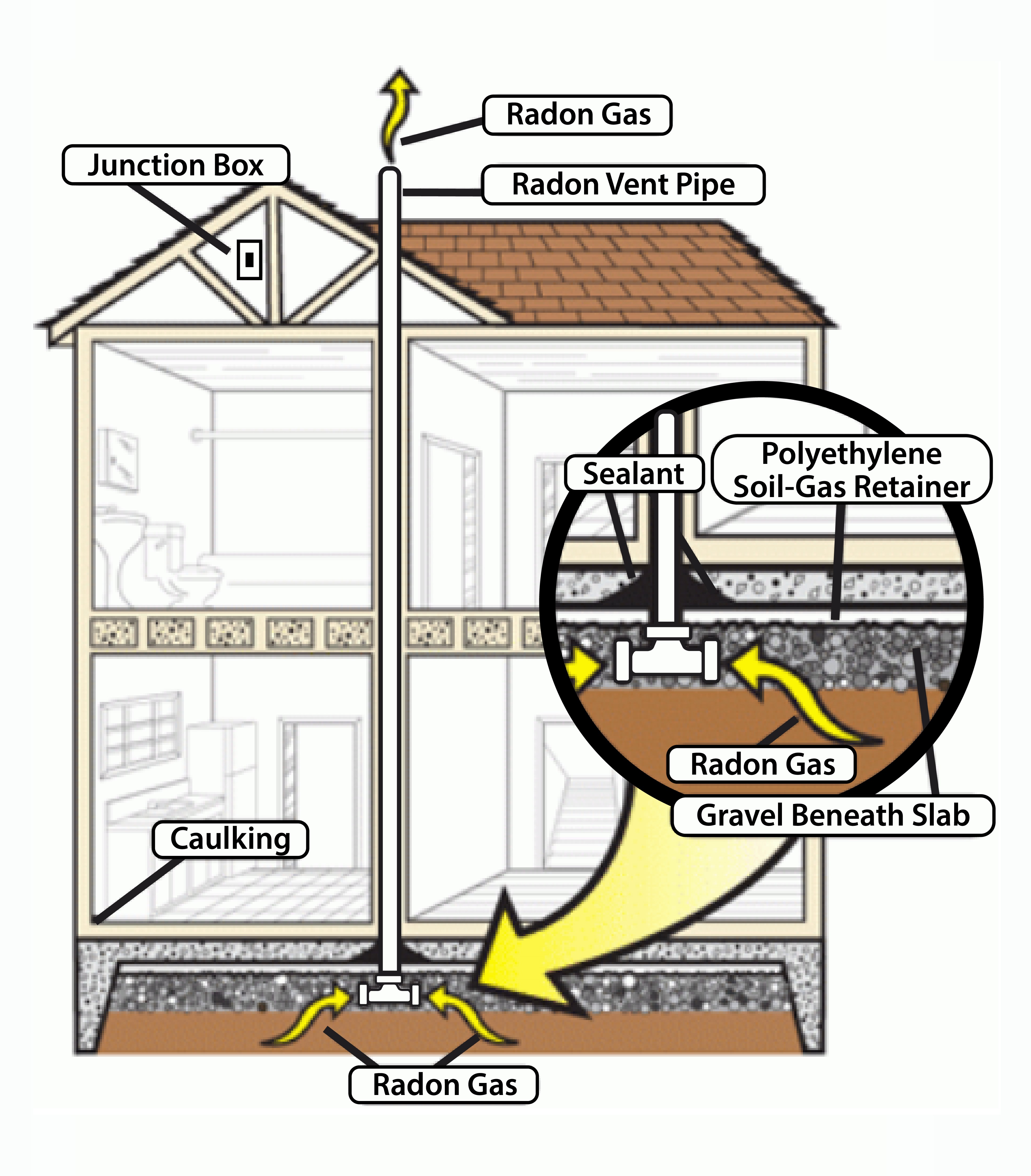 What is mitigation?
What is mitigation?
Reducing radon exposure is the first step to reducing health risks. A radon mitigation system is designed to reduce radon concentrations in the indoor air of a building.
A radon mitigation system that is most effective varies depending on the construction and building conditions of your home, school, or workplace. Mitigation systems can prevent radon from entering a building, while other systems reduce radon levels after it has entered. We recommend you hire a contractor who is certified in radon mitigation.
The primary benefit of radon mitigations is reducing the risk of developing lung cancer. Other benefits of installing a mitigation system include addressing the infiltration of moist air which may reduce the humidity level in the basement of the home.
What about the cost of radon mitigation?
Estimates on cost can be obtained by contacting certified radon mitigation technicians or companies. The cost will depend on the size and design of your home, and which radon reduction methods are needed.
At this time, the State of Oregon does not have or offer financial assistance to homeowners for radon mitigation. Financial assistance for radon mitigation may be available from the following organizations, depending on your situation:
- Community Development Block Grant program funds rehabilitation and repair of affordable housing. For more information, call the U.S. Department of Housing and Urban Development (HUD) at (202) 708-3587.
- "203k" program funds rehabilitation of single family homes. For more information, call HUD at (202) 708-3587.
- Some carriers of employee Health Savings Accounts (HSAs) now consider radon mitigation as a qualified medical expense; check with your HAS about this possibility for you.
Things to consider when choosing a radon mitigation company:
We recommend that you consider the following:
- Use a certified or qualified radon mitigation professional. You can find a list of qualified professionals on our Mitigation Companies page.
- Choose a contractor to fix a radon problem just as you would choose someone to do other home repairs - get estimates and ask for/check references. Consider knowledge, experience, pricing and the mitigation techniques they plan to use.
- Ask if they can guarantee (in a written contract) that the radon in your home will be reduced to a certain level.
The EPA's Consumer's Guide to Radon Reduction has provided a checklist to help guide you when evaluating and comparing contractors and also specific questions to ask.
*Oregon does not have state regulations that govern how companies mitigate for radon. Most mitigation companies follow technical standards/recommendations made by the EPA or the American Association of Radon Scientists & Technologists, Inc. (AARST). Many radon mitigation companies in Oregon reduce radon levels by using a method called sub-slab depressurization (see diagram on left-hand side of page).